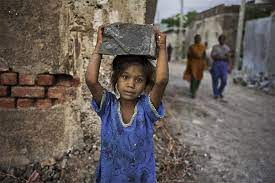Child labour is a serious issue in India, and the government has enacted strict laws to prevent the exploitation of children. Here’s an overview of the key laws and regulations related to child labour in IndiaChild labour deprives children of their childhood and is harmful to their physical and mental development. The Government provides free education to all children and has taken various steps to prevent child labour in India. However, child labour continues to be a problem in various parts of India due to poverty, lack of good schools and the growth of the informal economy. If all Entrepreneurs in the country decide to take steps to abolish child labour and help needy children receive education during their childhood, a vibrant and robust India can be created. “Knowledge will set you free”

Key Laws Governing Child Labour in India
A. The Child Labour (Prohibition and Regulation) Act, 1986 (Amended in 2016)
Prohibits the employment of children below 14 years in any occupation or process.
Allows children below 14 years to work only in family-based enterprises and the entertainment industry (with restrictions).
Prohibits adolescents (14–18 years) from working in hazardous occupations such as mining, explosives, and industries involving toxic substances.
B. The Factories Act, 1948
Prohibits the employment of children below 14 years in factories.
Allows adolescents (14–18 years) to work in factories but with limited working hours and under strict regulations.
C. The Mines Act, 1952
Prohibits the employment of anyone under 18 years in underground mines and related activities.
D. The Juvenile Justice (Care and Protection of Children) Act, 2015
Treats child labour as a criminal offense.
Imposes strict penalties on those employing children in hazardous conditions.
E. The Right to Education (RTE) Act, 2009
Ensures free and compulsory education for children aged 6 to 14 years.
Indirectly discourages child labour by promoting education.
Prohibited Occupations and Processes
The government has identified hazardous occupations where child labour is strictly banned. Some of these include:
- Mining and quarrying
- Manufacturing of fireworks, explosives, and matches
- Handling hazardous chemicals
- Construction work
- Domestic work in hazardous conditions
Punishments and Penalties for Violating Child Labour Laws
- Employers hiring children in prohibited occupations can face imprisonment of 6 months to 2 years and a fine of up to ₹50,000.
- Repeat offenders can face stricter penalties, including imprisonment of up to 3 years.
- Parents are not punished for a first-time offense but may face fines for repeated violations.
FAQs
Government Initiatives to Curb Child Labour?
- National Child Labour Project (NCLP): Provides education and vocational training for rescued child labourers.
- Mid-Day Meal Scheme: Encourages children to attend school rather than work.
- Operation Smile & Operation Muskaan: Nationwide campaigns to rescue and rehabilitate child labourers.
Rules for Employing Adolescents?
All employers employing adolescents must maintain a register with the following information:
- Name and date of birth of every adolescent employed to permitted to work.
- Hours and periods of work of an adolescent and the intervals of rest to which the adolescent is entitled.
- The nature of work of any such adolescent.
In addition to the above register, on employing or permitting an adolescent to work in an establishment, the owner of the establishment must send the Local Inspector the following information within 30 days:
- Name and situation of the establishment.
- Name of the person in the actual management of the establishment.
- Address to which communications relating to the establishment must be sent.
- Nature of the occupation or process carried on in the establishment.